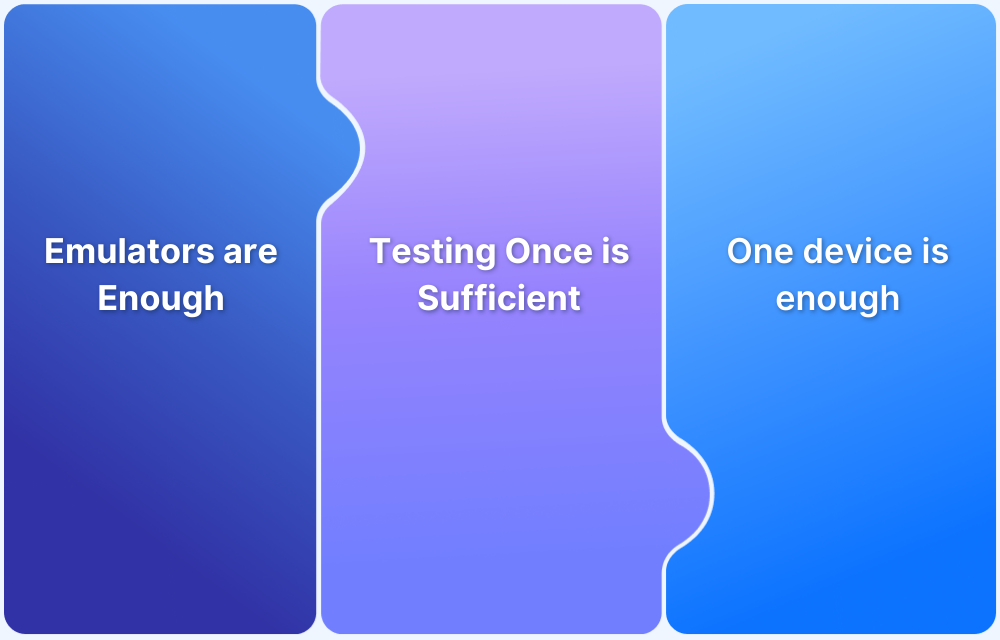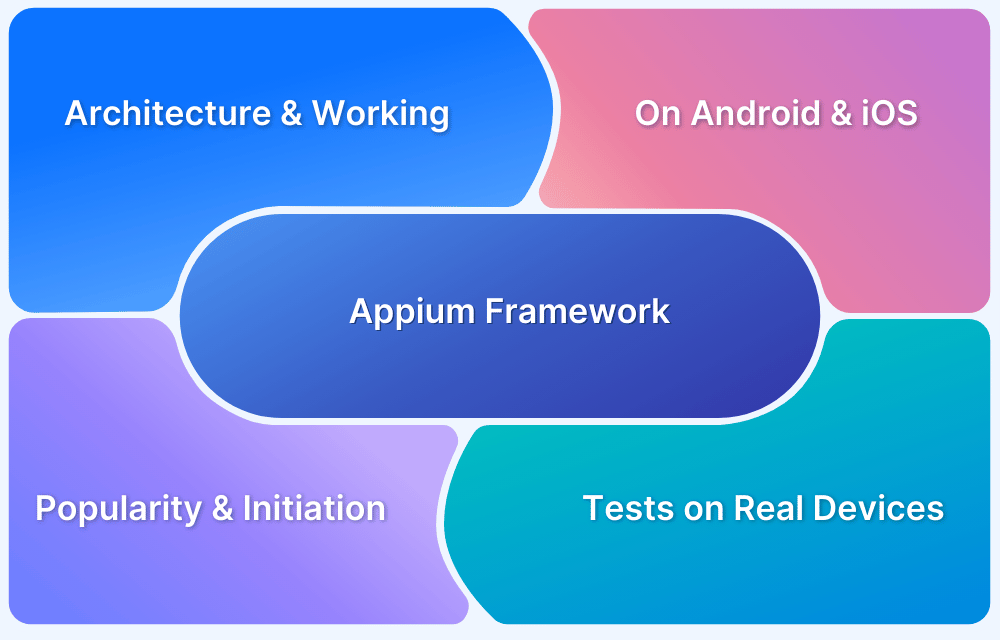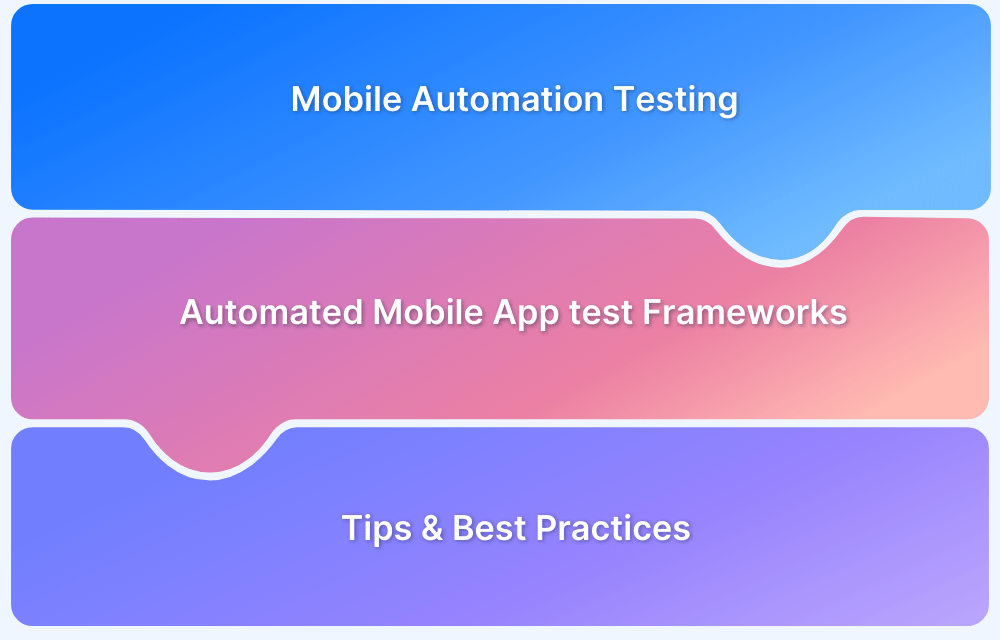The exponential growth in mobile usage has drastically transformed the way people live and work. Constant innovations in mobile applications are making mobile ecosystems more sophisticated day by day. This is driven by the fact that mobile internet traffic has increased from 48.8% to 64.3% globally.
At the same time, it is also challenging to meet customer expectations by providing them satisfactory digital experiences within tighter deadlines. Naturally, mobile app testing has become key to app development, aiming to ensure that user experience is not hindered by bugs. However, a number of myths have cropped up about mobile app testing.
Overview
Mobile App Testing: Reality vs Myths
Myth 1: Emulators/Simulators are enough
- Reality: They help early in dev but can’t mimic real-world conditions (battery, overheating, outdoor visibility).
- Fix: Always test on real devices for accurate performance checks.
Myth 2: Visuals > Features
- Reality: Users want beauty + functionality. A pretty app without working features = uninstall.
- Fix: Prioritize core workflows & business needs, then polish UI.
Myth 3: One Android & One iOS device is enough
- Reality: Ecosystem is diverse—chipsets, resolutions, OS versions differ. Behavior may vary across devices.
- Fix: Test on multiple real devices (legacy + latest) to maximize coverage.
Myth 4: Google & Apple handle app security
- Reality: Stores provide frameworks/tools, but don’t check for data leaks, 3rd-party vulnerabilities, privacy gaps.
- Fix: Security testing is your team’s responsibility.
Why Busting These Myths Matters
- Prevents bad ratings & churn due to poor UX.
- Builds trust through secure, reliable apps.
- Ensures market coverage across devices & OS versions.
- Accelerates bug detection & release confidence.
This article intends to debunk them.
Myth 1: Testing applications on emulators or simulators is adequate
Emulators can prove to be helpful in the initial stages of application development. However, one cannot rely solely on emulators for testing the performance of mobile apps in the real world. Emulators like iOS Emulator or Android Emulators, are just software programs that mimic the functionality of a particular device. They are not capable of testing real events like battery drainage, overheating or screen visibility in outdoor conditions.
Testing on Emulator and Simulator vs Real Devices: Comparison
For mobile apps to work seamlessly across thousands of devices each with unique specifications, they need to be tested thoroughly on real devices. This will help QAs detect precise errors faced by end-users using that device in the real world. An easy way to do this is to conduct mobile app testing on a real device cloud.
Try Testing on Real Device Cloud for Free
Myth 2: Visual appeal is more important than the actual features
For end-users to embrace your mobile application, first impressions are very vital. Thus, it is necessary for developers and designers to ensure that their apps present a combination of visual appeal and ease of use. However, this should not be done at the cost of compromising the key functionalities or workflows of the application. It’s meaningless for consumers to install an app that has attractive visuals but cannot address business requirements. If the app doesn’t deliver on key functionalities, pleasing visuals won’t save it from being uninstalled.
Myth 3: One device each of Android and iOS is enough to test
Both Android and iOS platforms are highly diverse. There are a number of Android and iOS devices released on regular intervals, each having a unique set of specifications in terms of memory, OS versions, chipsets, screen resolutions. Testing applications only on a few popular devices can no longer suffice. App behavior may differ in different OS versions. For example, an app may run smoothly on Android 6.0 Marshmallow but may face some compatibility issues on Android 7.0 Nougat.
It’s critical for developers to test and optimize their applications for as many Android and iOS devices as possible. Choosing not to optimize for an extensive device range might result in unsatisfactory user experiences. It may also result in bad user ratings for the application on Play Store as well as the App Store. Hence it is vital for teams to perform mobile app testing on diverse devices to secure maximum coverage in the market.
Myth 4: Mobile apps are already tested for security by Google and Apple
With the constant proliferation of smartphones, security has become a major concern. As per Gartner’s research, 90% of companies will test their mobile apps for security vulnerabilities by 2020. However, there exists a myth in the developer community that Google and Apple deeply test the mobile applications before they are made available on Playstore and Appstore. In reality, this is not the truth. Both the tech-giants provide frameworks and tools for the developer to create secure apps.
However, they do not check for data leakage, vulnerabilities in third-party libraries or privacy issues. The app developers are solely responsible for addressing all security concerns that may arise in the applications. For teams to ensure that their applications meet all business requirements, it’s important to be aware of these myths. Knowing what to do is as important as knowing what to avoid in the testing process. By having perfect clarity on how testing processes work, testers will be able to detect bugs faster and more efficiently.





